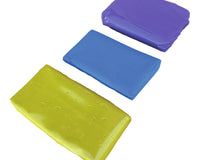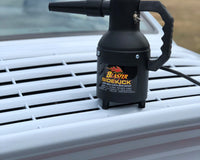Car owners know all too well that even the most careful driving cannot protect a vehicle from everyday wear and tear. Minor scuffs, scratches, and chips are an inevitable part of car ownership, caused by everything from accidental contact with shopping trolleys to gravel kicked up from the road. Left untreated, these imperfections not only affect your car’s appearance but can also lead to further paint damage, rust, and reduced resale value. Understanding how to properly identify and address scuffs, scratches, and chips is essential for maintaining a well-kept car that continues to look its best. In this guide, we will explore everything you need to know about removing these blemishes, with a focus on preserving paintwork and achieving a professional-looking finish.
Understanding the Difference Between Scuffs, Scratches, and Chips
To effectively restore your car’s paintwork, it is important to distinguish between scuffs, scratches, and chips. Each type of damage requires a slightly different approach. Scuffs are usually surface marks that occur when something rubs against the clear coat without penetrating the paint layer. They are often caused by brushes against walls, bags, or light contact with other vehicles. Fortunately, scuffs are generally the easiest to fix, as they rarely damage deeper layers of paint.
Scratches, on the other hand, can vary significantly in severity. A light scratch may only affect the clear coat, while deeper scratches can cut through to the primer or even bare metal. Identifying how deep a scratch runs is key to selecting the right repair method. Superficial scratches can often be polished away, whereas deeper ones may need filling, sanding, or even professional repainting.
Chips are usually caused by high-impact contact, such as gravel or stones striking the vehicle at speed. Unlike scratches, chips often remove a small section of paint entirely, leaving the underlying surface exposed. They are common on bonnets, bumpers, and lower body panels, and they require immediate attention to prevent rust from forming on exposed metal. By learning how to spot and categorise each type of paint damage, you can save time, effort, and money in repairs.
Preparing Your Car for Paintwork Repairs
Before tackling any imperfections, preparation is key. Working on a dirty car risks making scratches worse, as grit and debris can cause further abrasions when rubbed across the paint. Begin by giving your car a thorough wash using a pH-balanced shampoo, ensuring all dirt and contaminants are removed from the paintwork. Focus especially on areas around the damage to avoid trapping particles during repair.
Once the vehicle is clean, drying it properly is crucial. Water left behind can interfere with polishing or paint correction processes. Use a soft microfibre drying towel rather than an abrasive cloth, as this reduces the chance of adding fresh swirl marks. After drying, consider using a clay bar to remove bonded contaminants, which ensures the paint surface is smooth and ready for correction.
Finally, inspect the damaged area under bright, direct light to assess the extent of the issue. This step is vital, as many scratches appear less severe in shade but reveal their true depth under sunlight or artificial inspection lights. Having a clear view allows you to decide whether you can repair the damage yourself or if it requires professional help.
Dealing with Scuffs on Car Paintwork
Scuffs are typically the least severe form of paint damage, and most can be removed with simple polishing. Since they usually only affect the clear coat, the key lies in gently abrading the surface until the scuff disappears. Using a fine polish with a soft foam pad, apply small, circular motions over the affected area. Work gradually and inspect frequently, as over-polishing can thin out the clear coat.
In many cases, scuffs caused by rubber transfer from bumpers or other objects may not even require polishing. Instead, they can sometimes be removed with a mild cleaning solution or a detailing product designed to break down stubborn surface marks. Taking care not to scrub too aggressively will ensure you remove the transferred material without damaging the underlying paint.
For more noticeable scuffs, machine polishing may be required. A dual-action polisher paired with a light cutting compound can achieve better results than hand polishing, particularly on larger areas. However, this approach requires practice and careful technique to avoid creating holograms or uneven finishes.
Repairing Light and Medium Scratches
Scratches are more complex to fix, as their depth determines the approach. Light scratches that affect only the clear coat can often be removed with polishing. Start with a fine abrasive polish or scratch remover, working it into the affected area with controlled pressure. This gradually levels the surface of the clear coat until the scratch blends in with the surrounding paint.

For medium scratches that extend into the paint layer, polishing alone may not be enough. These may require a combination of wet sanding, compounding, and polishing to restore the finish. Wet sanding involves using very fine sandpaper with water to gently level the surface around the scratch. While highly effective, this method carries risks, as excessive sanding can remove too much paint and expose the primer.
Once the scratch has been minimised, follow up with a polishing compound to restore shine and then finish with a protective wax or sealant. This not only enhances the repaired area but also provides a protective layer to reduce the risk of future scratches.
Fixing Deep Scratches
Deep scratches that cut through the paint to the primer or metal require more extensive repair. These cannot be corrected through polishing alone, as the missing paint must be replaced. The first step is to clean the area thoroughly and ensure no contaminants remain in the scratch. If bare metal is exposed, applying a rust inhibitor or primer is essential to prevent corrosion.
Next, carefully apply touch-up paint that matches your car’s original colour. Modern cars have paint codes that can be used to purchase the correct shade. Apply the paint sparingly in thin layers, allowing each to dry before adding the next. Building up the paint gradually ensures a more even finish that can later be blended with the surrounding area.
Once the scratch has been filled and dried, lightly sand and polish the surface to smooth the transition between the repaired section and the original paintwork. Patience is key in this process, as rushing may leave uneven or noticeable repair marks.
Repairing Paint Chips
Paint chips, while small, can have long-term consequences if ignored. Exposed metal beneath chipped paint is highly vulnerable to rust, especially in damp conditions. The first step in repairing chips is cleaning the area thoroughly to remove dirt, loose paint, and road debris. A small brush or toothpick can help remove particles lodged in the chip.
Applying a primer is necessary if the chip exposes bare metal. This provides a foundation for the touch-up paint to adhere to while also offering corrosion protection. Once primed, carefully apply paint in thin, controlled layers until the chip is filled. Avoid overfilling, as excess paint can create raised spots that are difficult to blend.
After the paint has fully dried, gentle polishing can help level the repaired area with the surrounding surface. Finishing with a sealant or wax ensures the repaired area is protected from future damage and blends seamlessly with the rest of the vehicle.
Protecting Your Car After Repairs
Once scuffs, scratches, and chips have been addressed, prevention becomes the priority. Regular washing and waxing play an important role in keeping the paintwork protected. Wax acts as a barrier against environmental contaminants, UV rays, and minor abrasions. Applying a ceramic coating offers even greater protection, as these coatings create a harder, more durable layer over the paint.
Avoiding car parks where tight spaces increase the likelihood of scuffs and being cautious around gravel roads also helps minimise future damage. Using paint protection film on vulnerable areas, such as bumpers and bonnets, is another option that significantly reduces the impact of stone chips and scratches.
Routine inspections are essential, as catching new damage early makes repairs much easier and prevents problems from worsening. Taking a proactive approach to maintenance ensures your car remains visually appealing and structurally sound for years to come.
Conclusion
Knowing how to remove scuffs, scratches, and chips from your car is vital for maintaining both its appearance and long-term value. Scuffs are relatively easy to resolve with polishing, scratches demand techniques tailored to their depth, and chips require precise touch-up methods to prevent rust. By understanding the correct approach for each type of damage, car owners can keep their vehicles looking well-maintained and avoid costly professional repairs. Consistent care, combined with protective measures, ensures that even when inevitable imperfections occur, your car continues to shine and stay in top condition.




